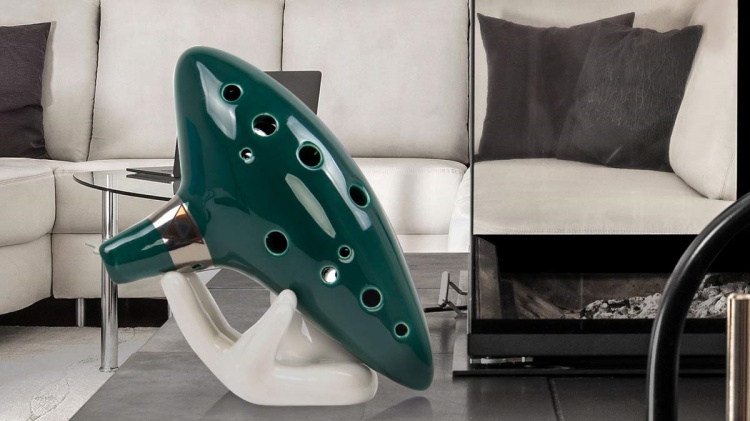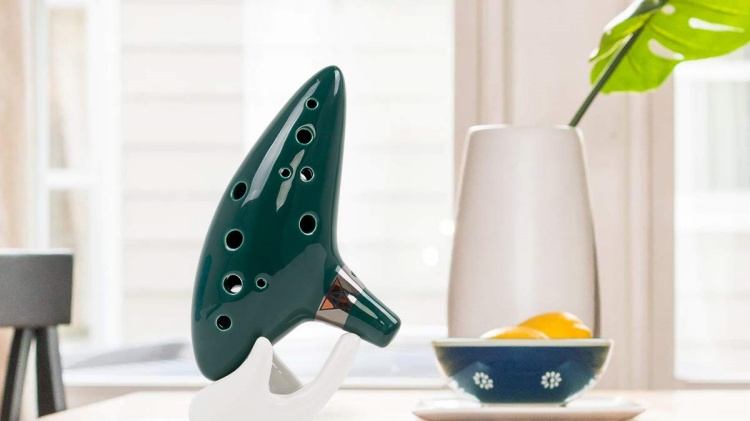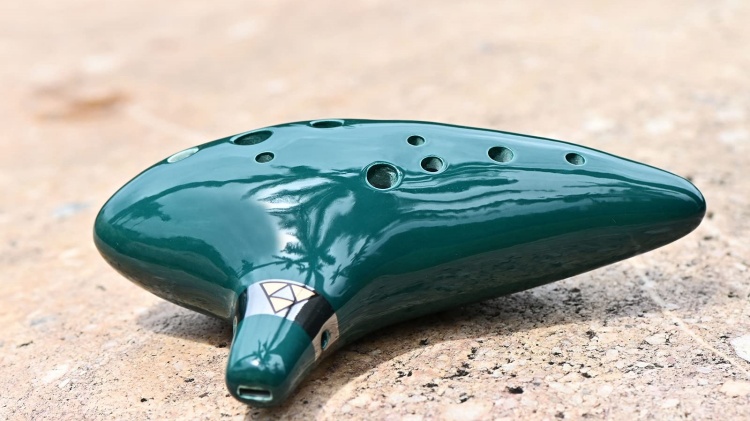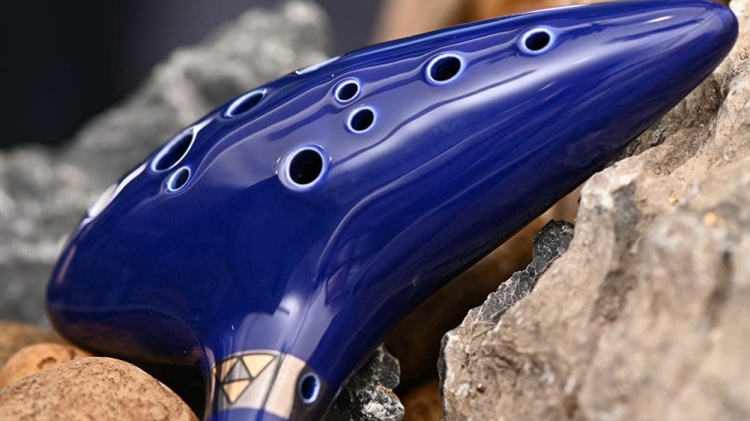
How To Disinfect Ocarina: Essential Tips and Techniques
When it comes to taking care of your musical instruments, ocarina requires special attention, especially in terms of disinfection. Whether you’re a professional musician or

The ocarina is an ancient wind instrument known for its otherworldly and evocative sound. With a history spanning over 12,000 years across cultures worldwide, the ocarina has captivated musicians and listeners alike with its haunting, flute-like tones. Though deceptively simple in appearance, the ocarina allows for versatile musical expression across genres when mastered.
As interest has increased in recent decades, a thriving community has developed around the Ocarina that new players can tap into. Join me as we unravel the mystique of this fascinating instrument – from ocarina basics to playing techniques, musical capabilities, historical journey, and contemporary significance.

The ocarina‘s beguiling character draws much intrigue despite, or perhaps because of, its understated presence. The ocarina produces a spellbinding sound with moving, vocal-like qualities though made of clay or ceramic.
Even the famous physicist Erwin Schrödinger remarked that of all musical instruments, the ocarina sounded most like the human voice. We’ll explore what gives the ocarina its captivating sonic depth starting from first principles.
Ocarinas belong to the family of vessel flutes – wind instruments that contain the air stream within hollow enclosed chambers. Like a recorder, the musician blows into a mouthpiece that directs air over a fipple mouthplate inside the chamber.
This aerates the chamber and causes acoustic standing waves at specific resonant pitches. Modern ocarinas typically have 4 to 12 finger holes allowing a 12-note chromatic range spanning two octaves. The number of chambers can also vary with multi chamber ocarinas. Single to triple-chamber ocarinas are common.
While vessel flutes often use an end-blown vertical design, the ocarina uniquely employs a side-blown transverse shape with the mouthpiece on the side. Sound is produced as air flows perpendicularly across the chamber.
This gives the ocarina a smooth, fluttering sound not possible with vertical flutes. Transverse ocarinas come in pendant, inline and bulbous body variants. The rounded, compact form also facilitates convenient handling as a portable travel instrument.
Modern ocarinas are generally made from ceramics or plastics, though more exotic variants exist in wood, glass, metal and bone. Glazed or unglazed clay models have better acoustic properties producing clearer, brighter tones. Plastic is affordable but has inferior sound.
For beginners, a simple 6-hole or 12-hole single-chamber ceramic ocarina in the key of C is recommended. More advanced players can explore inline double or triple ocarinas, as well as different tunings like alto/tenor keys for added sonic range. Tuning, ease of playing, and aesthetics are all important considerations.
The ocarina has a long, storied past, with artifacts dating back over 12 millenia. Let’s travel back in time and trace the origins and evolution of this mystical instrument across ancient cultures and civilizations leading up to the modern revival today.
The earliest ocarina-style vessels hail from Mesopotamia and the Andes circa 5000 BCE. However, the first documented musical use appears in China during the Song Dynasty nearly 4000 years ago where ceramic Xun vessels were employed to play single melodic lines and songs.
These had only blow hole without any finger holes. True musical ocarinas emerged later during the Ming dynasty with 4-8 finger holes to enable chromatic scales. Extra subholes were added to improve intonation. Meanwhile, in Japan, transverse globular flutes called tsuchibue appeared around 600 CE and developed into poetic double and triple chamber vessels like the taketori-tsuchibue.
Where early ocarinas started with a single resonating chamber, incremental innovations in China, Korea and Japan brought forth two, three and even more chambers used in parallel. Multi-chamber ocarinas coupled with more finger holes and subholes gave players greater pitch range, melodic flexibility and better tuning.
More complex music could now be performed. The 14th Century saw the emergence of advanced double and triple chamber ocarinas like the the kugo. While difficult to play, these inspired later instruments like the Song dynasty xiao and tang dynasty hulu she.
The ocarina traversed the globe through every epoch reaching new cultures including India and the Roman empire. By the 19th century intricate ocarinas were developed in Europe. 1862 saw musician Giuseppe Errico produce the first western 12-hole ocarina designed to play an extended chromatic 2-octave range – an influential milestone. Industrialization and mass production soon followed with the Budri family pioneering single and multi-chamber ceramic ocarinas. Ocarinas carved a niche in recordings and films into the mid 20th century through musicians like John Taylor and Karl Randolf before interest declined. A recent resurgence from the 80s onwards led by teachers like David West now continues to drive popularity.

Playing the ocarina beautifully as a melodic instrument requires specialized techniques that demand some effort to acquire. However, learning is also faster than many other instruments and sufficient practice can yield rewarding results. We’ll cover essential playing techniques for novices and veterans here from reading music to playing by ear, along with effective practice strategies.
Learning to sight-read musical scores is invaluable for the ocarina allowing one to directly play hundreds of compositions. Beginners should start by understanding staff notation, note values and time signatures, along with ocarina-specific elements – key signatures, accidentals, fingerings, articulation markings etc.
Online ocarina songbooks provide simple scores to practice reading notation while playing sample tunes. Apps like OcaStudio aid visual learning. Gradually advancing to more complex sheet music as proficiency improves.
Alternatively, students can opt for a more intuitive playing style by learning songs “by ear” through mimicking and repetition without reading musical notation. This teaches one to recognize and reproduce notes based on their pitch and intervals instead. Useful starters are children’s songs like Twinkle Twinkle with simple repeated motif patterns ideal for training your mind and ear. Paying attention to rhythm is key. Recording oneself to compare and improve helps. Further complexity can be built hearing and deconstructing melodies note-by-note.
Regular mindful practice with focus and self-analysis accelerates learning curves when playing the ocarina. Blend sight-reading sheets with by-ear attempts simultaneously. Analyze areas needing improvement and dedicate targeted practice time to sharpen tone quality, intonation, transitions between notes etc.
Record weekly videos to track progress. Learning becomes easier as muscle memory evolves allowing greater musical expression. Strive to learn full songs with tempo variations rather than isolated exercises alone to harness synergy benefits. Apps provide guided lessons. Joining live online lessons or communities also helps motivation through collaboration.
A distinguishing hallmark of the ocarina is its expansive sonic range – from gentle, haunting wisps to strong projecting tones that mimic the human voice. Mastering sound production unlocks the ocarina’s acoustic depth and melodic potential whether playing softly, powerfully or with great expression. We discover the key techniques behind exemplary tone and articulation.
Posture and holding the ocarina properly is vital for controlled playing, avoiding hand strain plus achieving clean articulation. Balance the ocarina weight by the bottom with the left thumb pointing up, right hand above the finger holes with palms cupped gently. Keep elbows relaxed at your side tilted slightly down.
Blow by directing a focused airstream into the windway using abdominal power from the diaphragm, keeping throat and mouth muscles relaxed. This produces best tone over a wide dynamic range from soft to loud volume. Always tune the ocarina before playing by matching pitch to a tuner.
Beyond playing correct notes, true musicality demands infusing emotion and feel into the performance – through elements like articulation, phrasing, variations in volume, mute-lifting, breath effects, vibrato, single tongue/double tonguing and microtones. Employ legato playing by smooth transitions between notes to shape melodic contours.
For sharp rhythmic punctuations use staccato. Broad dynamic shifts with crescendos/decrescendos build tension and climax. Vibrato adds depth through pulsing intensity. Carefully timed silences make music speak.
Players aiming for greater virtuosity can upgrade their ocarina with multichamber inline and triple ocarinas spanning three octaves or more. The multiple chambers necessitate highly coordinated breathing control engaging intercostals and abdominal muscles to maintain precise pressure differentials and articulation between the chambers.
The left pinky fingercontrols the high-pitched chamber, while thumbs play the lowest tone chamber. Breath-powered volume locks enable advanced effects. Intricate technique but rich, enrapturing sounds beckon.
Beyond its heritage identity, the ocarina permeates modern pop culture reaching new mass audiences through media, music and online communities. We survey its significance in film scores, gaming, as well as rising penetration into niche music genres.
The ocarina’s mysterious tones are well suited to fantasy movie themes and magical soundscapes. It features prominently in scores for movies like The Lord of the Rings and Harry Potter where composer John Williams employed the ocarina’s poignant sound to great impact buffeted by sweeping orchestral arrangements.
Gen Z audiences have also experienced the ocarina played by the character Link and others across Nintendo’s vastly popular The Legend of Zelda video game franchise spanning decades.
Contemporary bands like iOTA have also sparked new musical blendings with the ocarina – pairing its fragile, human voice-like qualities with aggressive rock instrumentation and percussion for intriguing tonal contrast.
Pop musicians have even produced upbeat remixes fusing folk ocarina with electronic dance music (EDM) elements. Such creative hybrids promise more mainstream assimilations. Niche genres see rising adoption as well – Celtic folk, country rock, Shakuhachi zen, medieval classical crossover, etc.
The ocarina thus straddles both mainstream pop culture but also thriving niche music circles. Contemporary ocarina albums span imaginative worlds from J.R.R. Tolkein-esque soundscapes and sweeping Game/Cinematic suites to New Age meditation moods and back-to-roots pastoral folk profiles.
Adventurous artists like Songbird Ocarinas even bridge traditions by merging ocarina with Indian scales and tabla beats alongside modern electronica – the ancient and futuristic conjoined through music!

For those newly drawn towards the ocarina, take heart from the thriving grassroots community that has organically grown around this charming instrument. Veteran players share insights for beginners in forums and groups, alongside lessons and tips from devoted educators who keep traditions alive. Let’s touch upon helpful launch pads to tap into on your ocarina voyage.
Active online groups like Ocarina Network answer frequently asked questions from – which first ocarina to buy, maintenance tips, improving breath control, techniques to achieve smooth legato to complex multiphonic effects and articulations. Practical guidance is discussed around playing posture, optimal tuning, handling moisture buildup, cleaning methods and quick DIY hacks. Members share their learning journeys and musical milestones through challenges that inspire perseverance.
Structured learning resources abound for novice players to avoid frustration – from dedicated books like Ocarina Method teaching finger placements, music notation reading and playing tips to video tutorials on YouTube channels like David Erick Ramos offering step-by-step instructions for both 12-hole and multi-chamber ocarinas. Lucid schematics detail finger positions. Those struggling with reading sheet music can watch video demonstrations to learn new songs familiar by ear. Links are shared for sourcing good quality starter ocarinas.
This guide just touched the tip of the iceberg on the magical world of ocarinas. For those seeking deeper knowledge, the appendices compile supplementary resources on ocarina care, tuning methods, rhythm exercises, sheet music repositories and more mobile apps to further your practice beyond what we could cover. Let the journey continue!
So ends our intriguing foray tracing the ocarina’s origins, chronicles, evolution in musical cultures and contemporary significance with key techniques revealed for new practitioners along with an aspirational glance into its future. Its graceful form hides versatile sonic depths and expressions awaiting exploration. An ancient vessel breathing new life through music – calling for more dreamers to take up its mantle!


When it comes to taking care of your musical instruments, ocarina requires special attention, especially in terms of disinfection. Whether you’re a professional musician or

When it comes to preserving the charm and sound of your ocarina, storage is key. Just like a treasured book or a fine wine, your

The world of music is filled with diverse and captivating instruments, and among them, the ceramic ocarina stands as a unique and charming creation. With

The enchanting melodies of an ocarina have the power to transport us to distant realms and evoke emotions like no other instrument. However, there are

The ocarina is an ancient wind instrument known for its otherworldly and evocative sound. With a history spanning over 12,000 years across cultures worldwide, the

When it comes to taking care of your musical instruments, ocarina requires special attention, especially in terms of disinfection. Whether you’re a professional musician or

When it comes to preserving the charm and sound of your ocarina, storage is key. Just like a treasured book or a fine wine, your

The world of music is filled with diverse and captivating instruments, and among them, the ceramic ocarina stands as a unique and charming creation. With
Copyright © 2024 echofluteocarinas. All Rights Reserved.